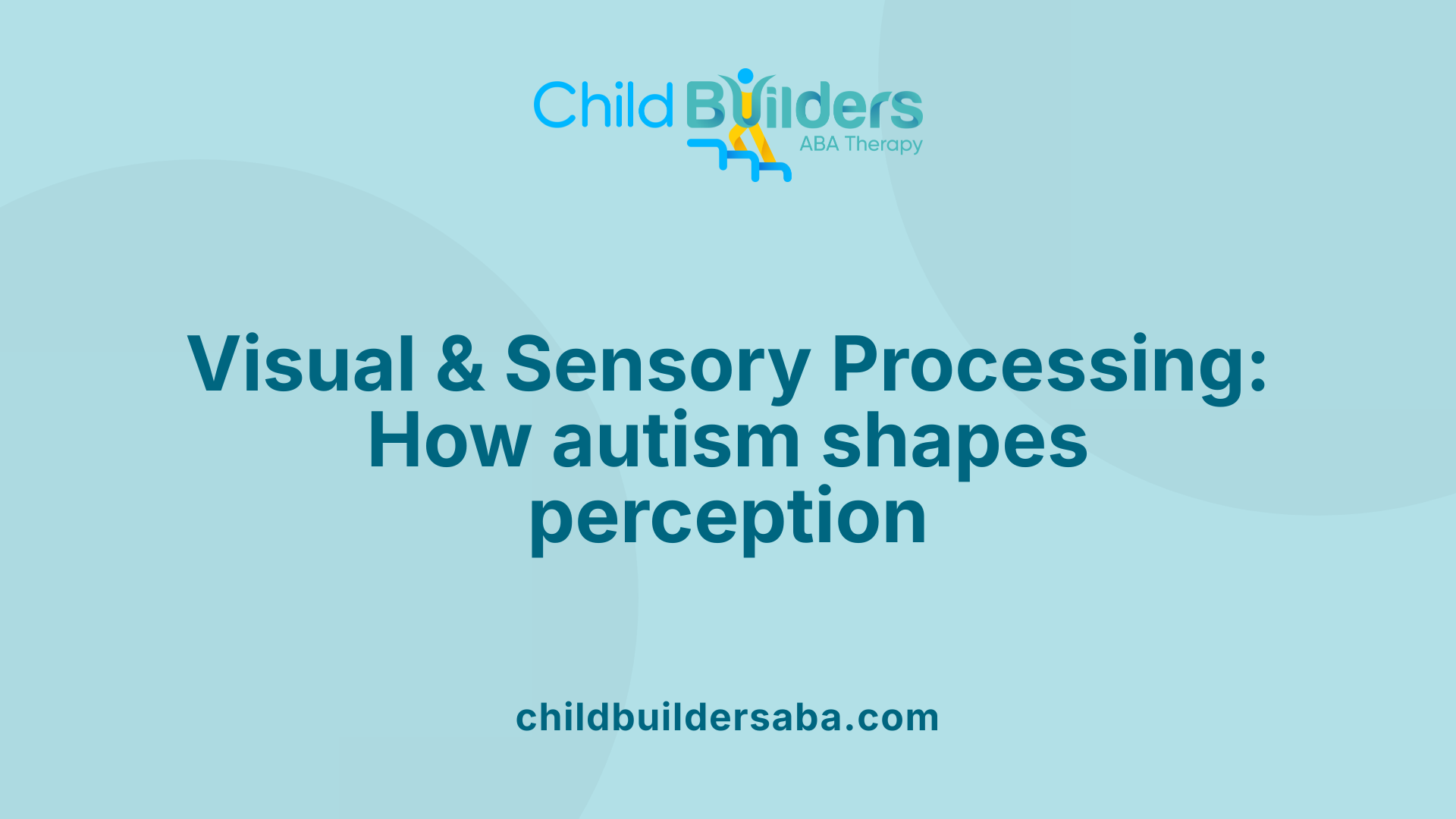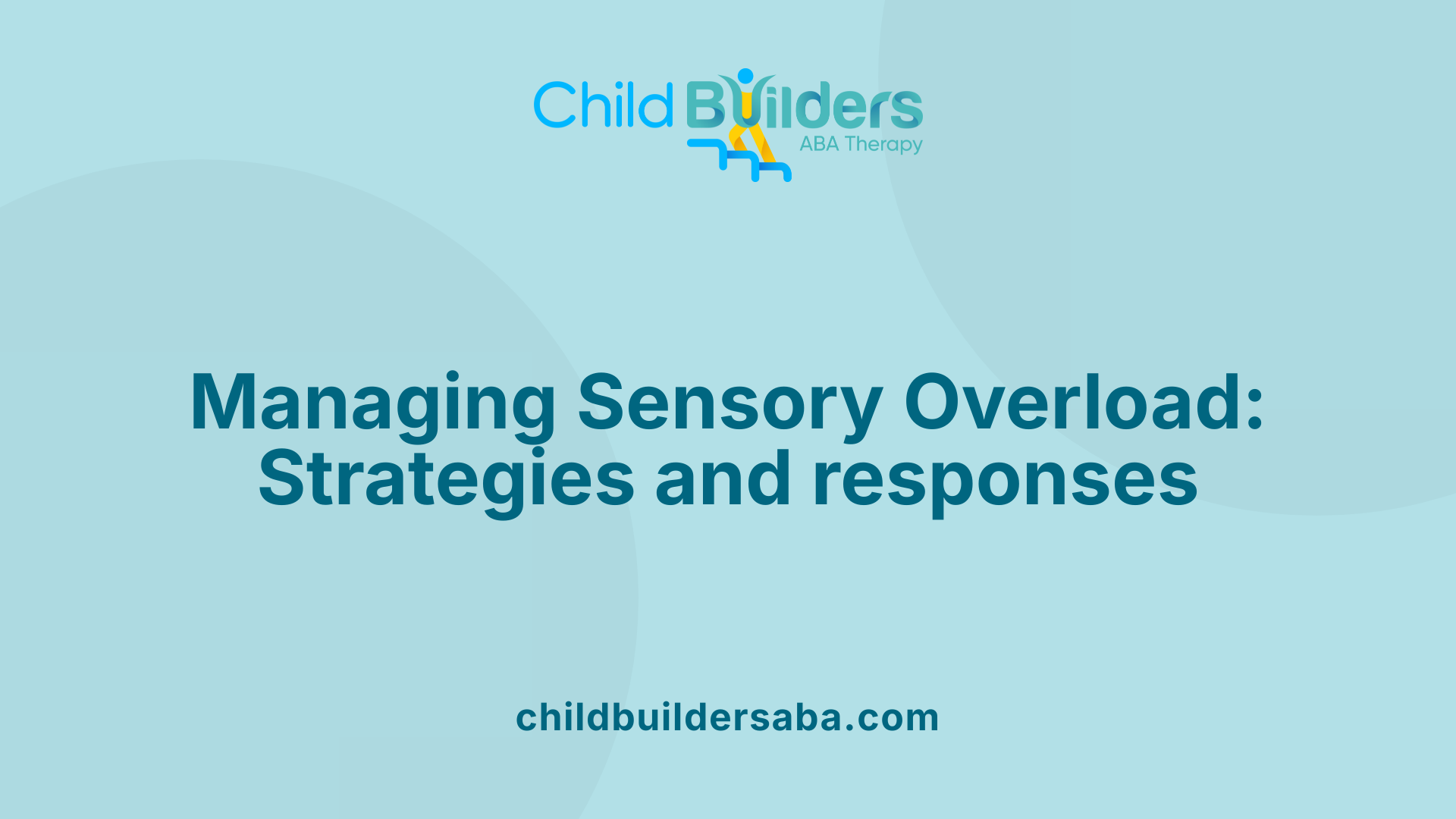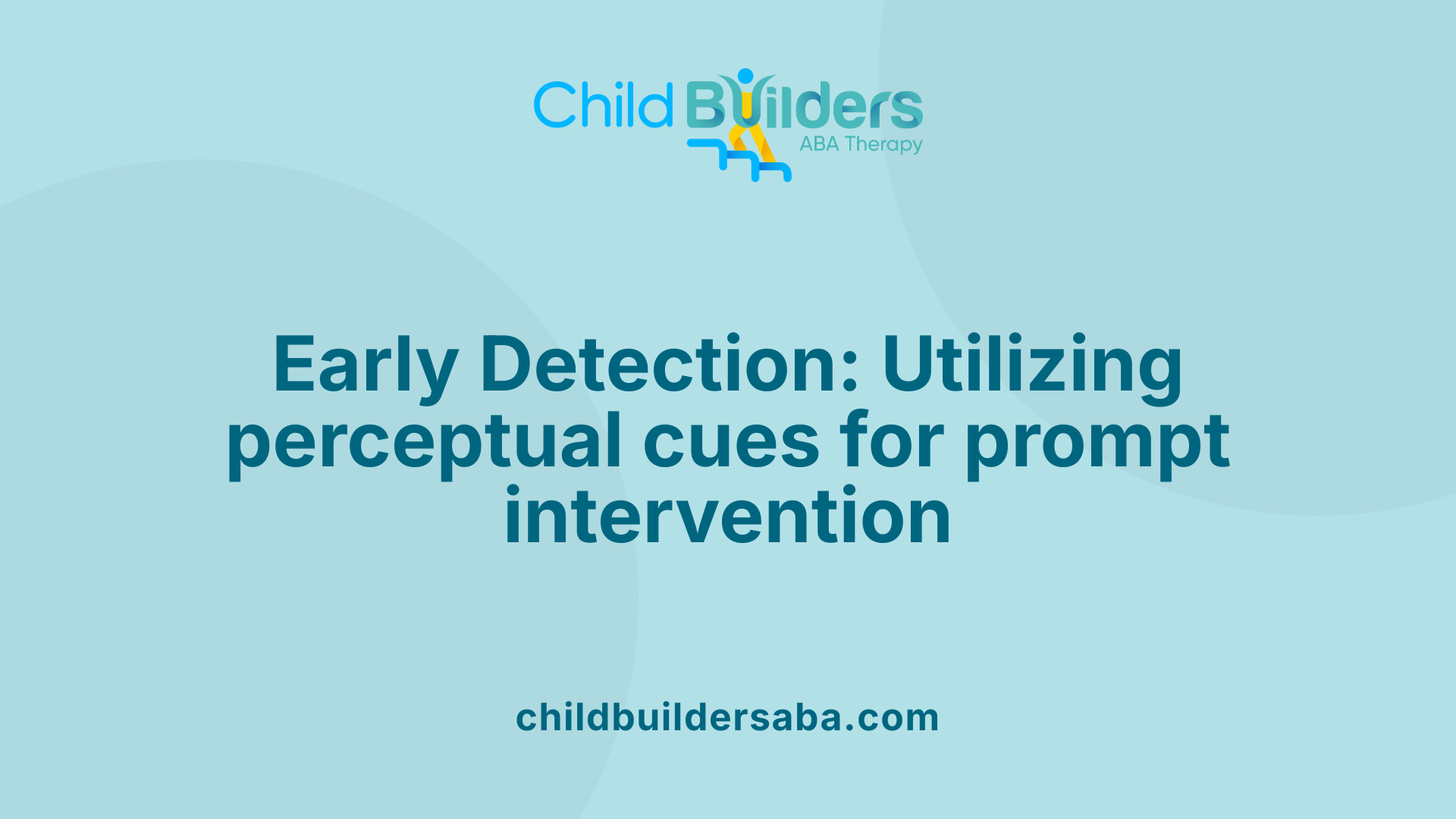How Do Autistic People See The World?

Understanding Autism: A Different Perception of Reality
Autism spectrum disorder (ASD) affects approximately 1 in 68 children in the US, manifesting as a diverse range of characteristics that influence how individuals perceive and interact with their environment. The core facets include differences in communication, behaviors, interests, and sensory processing. Recognizing how these differences shape their perception of the world can foster greater empathy and awareness, helping to bridge gaps in understanding and support.
The Visual and Sensory Processing in Autism

How does the world look to people with autism?
People with autism often experience the world in a way that is different from neurotypical individuals. Their sensory perceptions can be heightened or diminished, which impacts how they see, hear, and feel their environment. For instance, some sounds, lights, or textures may feel overwhelming due to sensory hypersensitivity, leading to discomfort or distress. Conversely, they might also be hyposensitive, meaning they may not notice certain sensory inputs, like a faint sound or touch.
This altered perception extends to social interactions. Autistic individuals might find it challenging to read social cues or express themselves effectively, making social interactions seem confusing or isolating. Their focus may tend to be on details, edges, or patterns rather than faces or social gestures. Repetitive behaviors, intense interests, or routines often serve as coping mechanisms or provide comfort amid sensory and social complexity.
Because each autistic person perceives the world uniquely, their experiences are shaped by personal sensory sensitivities, communication styles, and emotional processing. All these factors contribute to a perception of the world that can be vivid, overwhelming, or intensely detailed, varying greatly from one individual to another.
How does an autistic brain perceive the world?
The perception of the world through an autistic brain involves distinct sensory processing mechanisms. Many autistic individuals process sensory input differently, often leading to heightened sensitivities (hyper-responsiveness) or reduced sensitivities (hypo-responsiveness). This variability influences how they react to their surroundings.
Research indicates that the autistic brain may have increased activity in areas related to sensory processing and emotional response. These neural differences can cause sensory overload, where the volume of stimuli becomes overwhelming, or a craving for sensory input, known as sensory seeking behaviors.
Some neuroimaging studies suggest that lower activity of GABA — a neurotransmitter involved in inhibitory signaling — might contribute to these sensory processing differences. As a result, an individual might find it difficult to filter out irrelevant stimuli, which can impact attention and focus.
This complex neural landscape results in a highly subjective sensory experience. For example, visual stimuli such as motion may be perceived more intensely, and some individuals may see the world as a place of constant, high-intensity data. Overall, the perception of reality for someone with autism is influenced by a blend of neurological, genetic, and sensory factors, creating a unique and richly detailed internal world.
Sensory sensitivities and hyposensitivities
Autistic people often experience sensory sensitivities — both over- and under-responsiveness — across various senses:
- Auditory: Sounds may seem painfully loud or overwhelming, leading to requests for quiet or noise-canceling headphones.
- Visual: Bright lights and fast-moving objects can be overstimulating. Some may focus intensely on visual details or patterns.
- Tactile: Textures of clothing or touch sensations can be either intolerable or barely felt.
- Interoception and nociception: Awareness of internal states and pain sensations can be altered, affecting their emotional and physical responses.
- Proprioception: Awareness of body position may be impaired, affecting balance and coordination.
These sensitivities influence how autistic individuals interact with their environment, often leading to behaviors aimed at managing sensory input.
Impact of sensory processing differences on perception
Differences in sensory processing significantly shape how autistic people perceive and navigate the world. For example, increased visual motion sensitivity can affect how they perceive movement in their peripheral vision, impacting balance and awareness of their surroundings.
Studies on optic flow — the visual perception of motion — show that autistic individuals often perceive visual motion as self-motion, which can lead to a sense of disorientation or difficulty in distinguishing between moving objects and their own movement.
Furthermore, these perceptual differences can contribute to behaviors such as avoiding certain environments, seeking sensory input in specific ways, or experiencing social and emotional difficulties. Many interventions aim to reduce sensory overwhelm and enhance sensory integration, helping autistic individuals better adapt to their environments.
| Aspect | Description | Additional Notes |
|---|---|---|
| Visual perception | Increased sensitivity to motion, perception of self-motion | Impact on balance and environment awareness |
| Auditory sensitivity | Overwhelmed by loud sounds, difficulty filtering noise | Use of noise-canceling devices helpful |
| Tactile sensitivities | Discomfort with textures, touch | May prefer sensory-friendly clothing |
| Neural factors | Lower GABA activity, heightened brain activity | Contributes to sensory overload |
| Internal perception | Altered interoception and nociception | Affects emotional and physical responses |
Understanding these sensory and perceptual differences emphasizes the importance of supportive environments and tailored interventions, which can make daily experiences more manageable for autistic individuals.
Perceptual Traits and Cognitive Differences

What are some perceptual traits of autistic individuals?
Autistic individuals often experience sensory information differently, exhibiting heightened sensitivities to various stimuli. This can include being easily overwhelmed by loud noises, bright lights, or certain textures, which may lead to sensory overload. They tend to focus intensely on specific details or patterns within their environment, rather than on the whole picture. This focus enhances their ability to recognize complex patterns, which supports their in-depth interests and skills.
Many autistic people perceive social cues and emotional expressions in a literal or logical manner. For example, they might interpret sarcasm or jokes as straightforward statements, missing implied meanings or social nuances. Challenges with eye contact and social interactions are common, partly because their perception of social cues differs from that of neurotypical individuals.
Sensory processing differences—whether hypersensitivity or hyposensitivity—affect how they experience sensory input like sound, light, and tactile sensations. Such differences can influence their reactions and behaviors, often leading to behaviors aimed at managing sensory overload.
Autistic individuals may also exhibit preferences for routines and repetitive behaviors, which can serve calming purposes or express their focus on specific interests. Overall, these perceptual traits influence many aspects of daily functioning, shaping their interactions and responses.
How does their perception influence social interactions?
The way autistic individuals interpret social cues profoundly influences their interactions. Many perceive facial expressions, gestures, and social cues in a literal or logical manner, which can hinder understanding implied meanings or emotional subtexts that are intuitive for neurotypical people.
For example, they might not recognize when someone is joking or might take compliments or criticisms at face value. This literal perception can lead to misunderstandings, social anxiety, or withdrawing from social situations, particularly if they feel unsure about how to interpret others' emotions or intentions.
As a result, social interactions may feel unpredictable or overwhelming for autistic individuals. They might avoid certain social settings or require additional support to navigate complex social dynamics. Recognizing these perceptual differences is essential for fostering more inclusive environments and developing supportive interventions.
The Inner World of Autistic Individuals

How do autistic individuals experience their inner world?
Autistic individuals often perceive their inner mental landscape as vast, intricate, and highly detailed. Many describe it as being akin to a Tardis—larger inside than it appears from the outside—emphasizing the complex and active nature of their internal spaces.
Within this rich mental environment, they frequently create immersive worlds filled with vivid memories, visualizations, and layered thoughts. These internal realities can serve as both a sanctuary and a barrier, providing a refuge from sensory overwhelm but also making external social interactions and environments more challenging.
Some autistic people talk about their ability to 'escape' into their heads—using mental worlds as a way to cope with sensory overload and social anxiety. This internal escape acts as a mental retreat, offering relief but sometimes leading to social withdrawal.
Use of metaphorical descriptions of internal experience
Many autistic individuals resort to metaphorical language to describe their inner worlds. They might refer to their mental processes as a 'world engine' or a 'tunnel,' reflecting fluid, dynamic, and complex perceptions.
Such metaphors highlight how their brains might be over-activated, with information flowing in layers and creating a vibrant and sometimes overwhelming mental landscape. Descriptions like these underscore the depth and vividness of their internal processing, showcasing a mind that is both highly active and richly textured.
Over-activation of the brain and mental overload
The 'Intense World Syndrome' theory provides a useful framework for understanding this internal experience. It proposes that autism involves an over-activation of neural circuits, which results in mental overload instead of deficits.
This exaggerated brain activity can make the environment feel overwhelming, characterized by heightened perceptions and a flood of sensory information. Such over-activation can cause autistic individuals to experience their surroundings as intensely detailed or even engulfing.
Research indicates that this may be linked to decreased activity of GABA, an inhibitory neurotransmitter that helps regulate neural excitation. Reduced GABA activity could explain the heightened sensitivity and the overwhelming nature of sensory input for many autistic people.
In summary, the inner life of autistic individuals is often described as elaborate, layered, and vibrant, with an internal world that can be both a rich resource and a source of sensory overwhelm. This neurological and perceptual over-activation results in a mental landscape that is immersive, metaphor-laden, and sometimes difficult to manage in everyday life.
Sensory Overload and Behavioral Responses

What triggers sensory overload in autistic individuals?
People with autism often experience sensory processing differences that make them highly sensitive to their environment. Over-sensitivity or under-sensitivity to stimuli such as visual motion, sound, touch, and proprioception can trigger sensory overload. For example, increased sensitivity to visual motion in peripheral vision may cause a person to feel overwhelmed in busy or noisy environments.
Research indicates that such sensory overload may be linked to lower activity of the neurotransmitter GABA, which helps regulate brain activity and sensory input. When sensory input surpasses a person’s threshold, it can lead to feelings of mental overload, often described as a flood of sensory information that the brain struggles to manage.
How do sensory overloads affect behavior?
Sensory overloads, caused by oversensitive sensory systems, can lead to behaviors such as tantrums, anxiety, or social withdrawal. These responses are often attempts to cope with the intense or overwhelming stimuli. When the flow of sensory information cannot be processed smoothly, feelings of frustration or panic may arise. Consequently, the individual might find it hard to stay calm, focused, or socially engaged.
For many autistic people, sensory overload isn't just about discomfort; it can impair their ability to function effectively in daily life. Over time, repeated overloads can increase stress and impact mental health.
Strategies for managing sensory sensitivities
Managing sensory sensitivities is a critical part of supporting autistic individuals. Many adopt self-regulatory behaviors such as repetitive movements—rocking, hand-flapping, or spinning—to self-soothe and reduce feelings of overwhelm.
Structured routines and sensory-friendly environments are also essential. Creating spaces with reduced noise, soft lighting, and familiar objects can help prevent overload. External tools like noise-canceling headphones, weighted blankets, or personal sensory items are often used to create a calming effect.
Additionally, some interventions focus on helping individuals develop coping skills to manage sensory overload more effectively. Teaching sensory coping strategies can empower autistic people to navigate challenging environments more comfortably.
How research aims to support autistic sensory management
Scientists are exploring various approaches to reduce sensory overwhelm and improve adaptation. Interventions include sensory integration therapy, which helps tune the brain's response to sensory stimuli. Advances in understanding the neural underpinnings of sensory sensitivities, such as GABA activity levels, are guiding the development of targeted treatments.
Research is also ongoing into early detection of sensory processing differences using tools like eye-tracking. For instance, the BabySibs project studies infants' gaze patterns and sound responses to identify early signs of autism, potentially facilitating intervention before behaviors become more challenging.
Overall, the goal is to improve quality of life by helping autistic individuals better manage sensory sensitivities and reduce behavioral reactions rooted in overload.
| Aspect | Details | Additional Notes |
|---|---|---|
| Triggers | Visual motion, sound, touch, proprioception | Overactivation often linked to low GABA levels |
| Behavioral responses | Tantrums, withdrawal, anxiety | Coping behaviors include self-stimulation |
| Management strategies | Routines, sensory tools, structured environment | Early intervention can improve adaptation |
| Research focus | Sensory integration, early detection | Eye-tracking and neural studies |
Understanding sensory sensitivities is vital in supporting autistic individuals across their lifespan, promoting comfort, safety, and social engagement.
Implications for Early Diagnosis and Support

How is autism diagnosed early using perceptual differences?
Detecting autism early remains a challenge, but recent research efforts are paving the way for more timely diagnosis through perceptual differences. One promising approach is the use of eye-tracking technology, which measures how infants and young children observe their surroundings.
The BabySibs project exemplifies this innovation by examining infants’ visual and auditory preferences. Researchers observe tendencies such as a preference to look at scrambled faces instead of typical ones, and listening to computer-generated sounds rather than natural speech. These behaviors are indicative of differences in how autistic individuals perceive faces and sounds.
Early identification through these perceptual markers allows for earlier intervention, which is critical in supporting autistic children. By recognizing signs before behavioral symptoms fully develop, caregivers and therapists can implement strategies that facilitate better developmental outcomes.
What role do genetics and brain activity play in perception?
Autism is primarily considered a genetically influenced condition, involving multiple genes that contribute to its manifestation. Neuroimaging studies reveal that autistic individuals often exhibit increased brain activity in regions responsible for sensory processing and emotional regulation.
More specifically, a lower activity of inhibitory neurotransmitters like GABA may disturb the brain’s ability to filter sensory information effectively. This neurochemical imbalance contributes to sensory sensitivities, affecting how individuals perceive stimuli such as light, sound, and touch.
These neurological factors help explain the heightened sensory experiences commonly reported by autistic people, including over-responsiveness or under-responsiveness to sensory input. They also underline the importance of considering biological factors when developing effective support strategies.
How can society better support autistic individuals?
Supporting autistic individuals involves a multi-faceted approach rooted in early detection, personalized intervention, and societal change. Early diagnosis enables timely support, which is vital for improving social, communication, and sensory integration skills.
Tailored interventions might include sensory integration therapy, communication aids like AAC devices, and routines that help manage intense interests or repetitive behaviors. Recognizing sensory sensitivities and reducing environmental overloads can improve quality of life.
Moreover, societal barriers—such as misunderstanding, stigmatization, and inaccessible environments—must be addressed. Embracing the social model of disability means focusing on modifying society to accommodate neurodiversity rather than viewing autism solely as a defect.
Educational campaigns, inclusive policies, and community programs foster understanding and acceptance. Creating supportive environments ensures autistic people can participate fully and comfortably in society.
| Aspect | Description | Example/Detail |
|---|---|---|
| Early Detection | Using perceptual and behavioral markers | Eye-tracking identifying face and sound preferences |
| Genetic & Brain Factors | Neurochemical and neuroimaging findings | Increased sensory region activity, GABA levels |
| Society’s Role | Supportive measures and reducing barriers | Sensory-friendly spaces, awareness campaigns |
Overall, integrating scientific insights and societal support creates a more inclusive future for autistic individuals.
A World Seen Through Unique Lenses
Understanding how autistic individuals perceive the world broadens our perspective on human diversity. Their sensory experiences, internal worlds, and perceptual traits are not deficits but variations that enrich the tapestry of human cognition and perception. Appreciating these differences fosters empathy, highlights the importance of supportive environments, and emphasizes that with appropriate care, autistic individuals can navigate their complex worlds and live meaningful lives.
References
- How People With Autism See the World - Business Insider
- What is autism - National Autistic Society
- Autism and Emotions: How and Why Do Autistic People Process ...
- How Autism Feels From The Inside - The Autistic Advocate
- How people with autism see the world - Curtin University
- [PDF] How are Social Skills Affected of Children with Autism from Age 3 to ...
- What Do We Know About Noise Sensitivity In Autism?



.jpg)

































































































